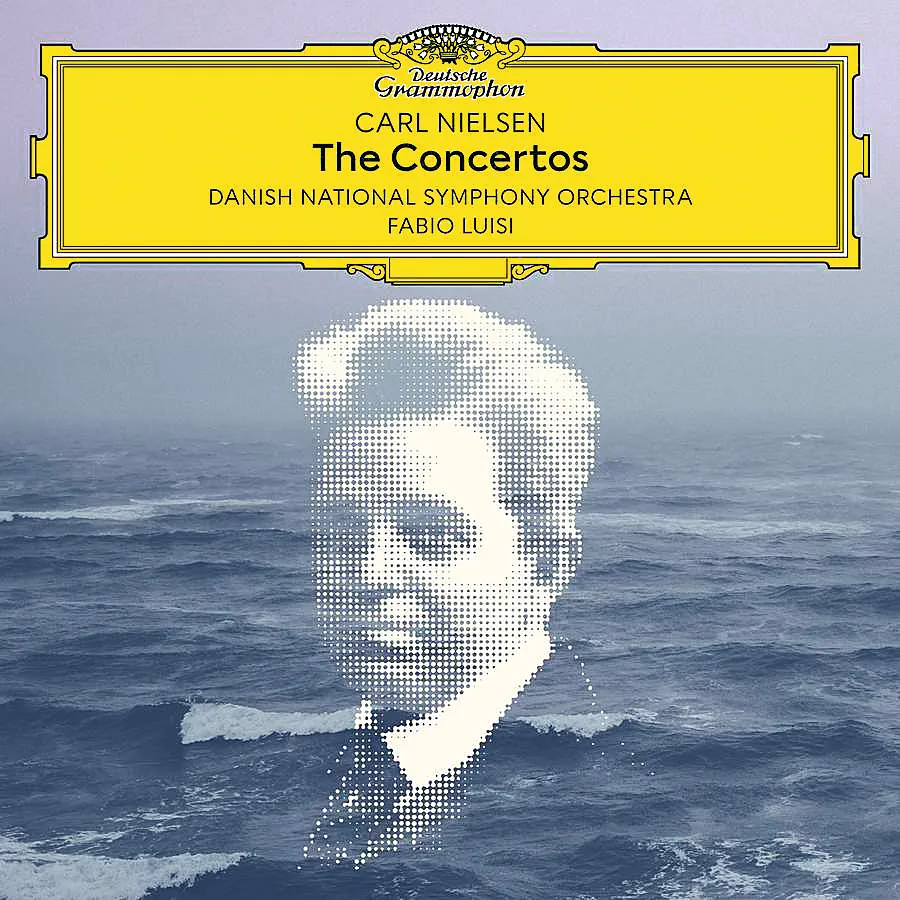
Nielsen Flute Concerto*, Clarinet Concerto, Op 57**, Violin Concerto, Op. 33† *Ulla Miilmann (flute), **Johnny Teyssier (clarinet), †Bomsori Kim (violin); Danish National Symphony Orchestra/Fabio Luisi DG 486 3487 (digital only) 84:10 mins
Any previous notions I had that Nielsen’s Violin Concerto of 1911 inhabits a different, more romantic world than his last major works for flute, clarinet and orchestra of the late 1920s – would that he’d lived to compose three more for the oboe, bassoon and horn respectively of the group for which he wrote a delicious Quintet – was turned on its head by the sheer personality of these three performances. The basis is the big ‘Nielsen, Nielsen, Nielsen’ festival in Copenhagen held around the time of the composer’s birthday in June, of which I enjoyed the second concert live, and I really hope the cantatas are also in the offing; his Hymnus Amoris is like a choral symphony, and typically unorthodox.
The chameleonic protagonist is the great Dane himself, inhabiting at least four temperaments in each concerto (the first of them sits between the moody humours of the Second Symphony and the alternation of frolics and rustic idyll in the Third), but vitally the soloists tune into that with unparalleled vividness, responding so sensitively to their orchestral colleagues.
South Korean violinist Bomsori Kim signs in with a big virtuoso flourish, the orchestra correspondingly feral in response, but instantly becomes a team player through the introspective and extrovert fluctuations of this work – in danger of sounding over-extended without the keen humanity we get here. If you wonder where it’s all going, the dances of the second and fourth movements put you right.
Danish National Symphony Orchestra principal flautist Ulla Miilmann and clarinettist Johnny Teyssier, world-class as soloists, dialogue keenly not only with their respective sparring partners – trombone in the Flute Concerto, side-drum in the Clarinet Concerto – but allow equal limelight to their fellow woodwind players, all heard in luminous sound. The strangeness here is more pronounced, the unpredictability even more surprising, like the world of the deceptively named ‘Sinfonia Semplice’, the Sixth, but similarly odd little jaunty tunes provide signposts between ferocity and depression; as in the final symphony, innocence and experience are kept in perfect balance. Fabio Luisi proves once again that he can step beyond the merely well-behaved while keeping a tight rein on fantasy. His complete set of Nielsen’s symphonies with the Danish orchestra were released as a three-disc set earlier this year, but this album could very easily have appeared with it as the fourth disc – the concertos are of the same quirky genius – but it has to make do for now as a digital-only release, concomitant with the remarkable concert series (also screening on DG’s Stage+ platform). The sound is so vivid and alive, perfect for the timbres of the soloists; it matches the beauty of the fine hall in which the Nielsen concerts were given – the Koncertsalen at Copenhagen’s DR Koncerthuset.
Germany, it seems, has too long had a problem with what it sees as the quirkiness of Nielsen and Sibelius; but Deutsche Grammophon can certainly say it’s tried, given Karajan’s recording of No. 4, Neeme Järvi’s magnificent cycle of the six symphonies with the Gothenburg Symphony Orchestra, and now the vintage adventure of Luisi in Denmark.
David Nice

